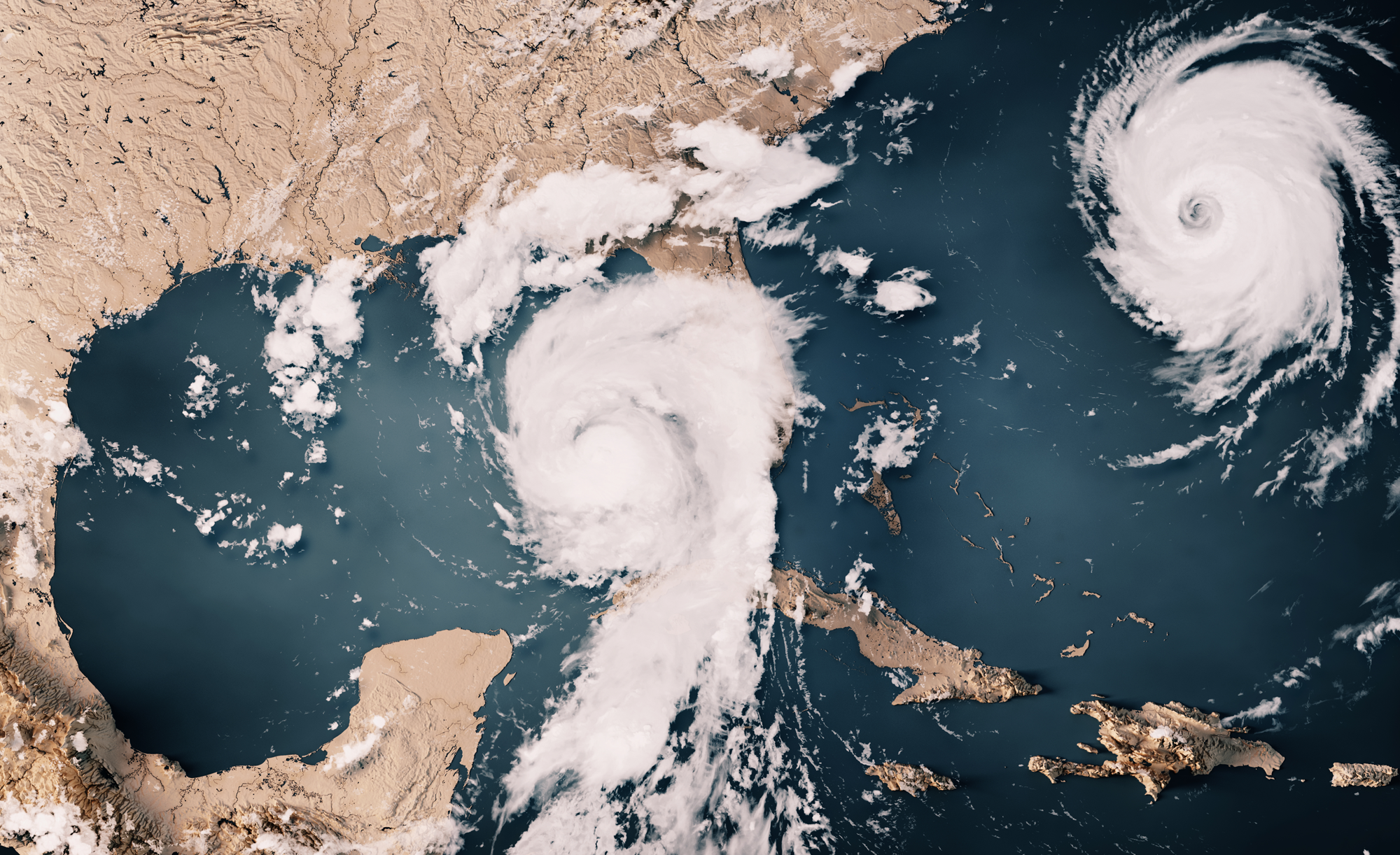
A recent CBS News article reports that the 2025 Atlantic hurricane season is expected to be 125% more active than average. With ocean temperatures rising and climate conditions shifting, we spoke with Texas A&M Atmospheric Sciences Assistant Professor Dr. Kelly Núñez Ocasio to better understand the science behind these predictions—and the lesser-known factors at play, including her research on African Easterly Waves (AEWs), a critical but often overlooked piece of the hurricane puzzle.
Q: The CBS News article predicts this year’s hurricane season will be 125% more active than average, though a bit less than last year. What factors cause such fluctuations in hurricane activity from year to year, and what does this tell us about longer-term trends in hurricane behavior?
A: Factors that cause fluctuations in hurricane activity from year to year include, first, climate and large-scale circulations, such as the El Niño–Southern Oscillation (ENSO). An El Niño pattern typically suppresses Atlantic hurricane activity by increasing wind shear, which disrupts storm formation, while La Niña has the opposite effect, reducing wind shear and creating more favorable conditions for hurricanes. Secondly, sea surface temperatures (SSTs) play a major role, as warmer SSTs provide more energy for hurricanes, fueling their intensification. And last but not least, weather patterns over Africa and the Atlantic—specifically African easterly waves (AEWs), which often serve as tropical cyclone (TC) seeds in the Atlantic.
Recent trends show rising SSTs due to climate change, and research has shown that this increase contributes to greater hurricane intensity. Moreover, my most recent research, using high-resolution weather models with prescribed human influence, has demonstrated that increased atmospheric moisture—driven by rising atmospheric temperatures—can modulate the African easterly jet and the West African Monsoon, ultimately influencing the intensity of AEWs. My findings suggest that future AEWs will be more intense, directly impacting Atlantic tropical cyclone intensity. However, TC seeds may take longer to form, potentially shifting the climatological Atlantic hurricane season [Núñez Ocasio et al. 2024; Núñez Ocasio and Dougherty 2024].”
I think it's important to point out that one key aspect often overlooked in hurricane forecasting—and in many news articles like this—is the role of African easterly waves (AEWs) as the primary seeds for tropical cyclones in the Atlantic. Many seasonal climate hurricane predictions do not account for AEWs, and my research is helping to bridge this gap in understanding how future hurricanes will be modulated by future AEWs.
Q: The report points out that warm ocean temperatures are a key factor in the forecast for an active hurricane season. How do scientists determine whether these warmer temperatures are part of natural ocean cycles or if they’re being influenced by long-term climate trends? Why is it important to understand the difference when predicting future hurricane seasons?
A: Although not the only factor, ocean temperature plays a major role in hurricane formation. Scientists use a combination of observational data, climate models, and historical records to distinguish between natural ocean cycles and long-term climate trends. By analyzing long-term temperature records, they examine SST data spanning over a century, identifying persistent warming trends beyond typical multidecadal fluctuations. Climate models help further differentiate these influences by running simulations with and without human-driven factors, such as greenhouse gas emissions; if warming occurs only in models that include human influences, it suggests an anthropogenic impact. Additionally, climate models with prescribed human influence can study not only changes in SSTs but also changes in TC seeds, such as AEWs. My research with this type of future climate scenario simulations has shown that changes in AEWs are intimately linked to future changes in hurricane formation in the Atlantic.
Understanding natural variability versus climate-driven trends refines hurricane forecasts. If warming is driven by greenhouse gases, hurricanes will likely intensify, impacting preparedness and infrastructure. Accurate attribution helps distinguish temporary shifts from long-term changes, guiding effective adaptation strategies.
Q: Experts predict the current weak La Niña conditions may transition to neutral in the coming months. How does this shift in the Pacific Ocean affect hurricane development in the Atlantic and Gulf of Mexico?
A: While the weakening of La Niña could reduce hurricane activity somewhat, other factors like warm Atlantic waters and intensity of AEWs could still support an active season.
Q: Warm sea surface temperatures are said to contribute significantly to stronger storms. Can you explain how warmer water intensifies hurricanes and what impact even small temperature changes can have on storm strength?
A: Warmer ocean water intensifies hurricanes by supplying energy and moisture. Even small SST increases boost evaporation, fueling stronger storms. As climate change raises SSTs, hurricanes become more intense, producing more rainfall, and causing greater impacts—even if their frequency remains unchanged.
Q: The CBS report mentions NOAA’s vital role in providing data for hurricane forecasts, despite recent budget and staffing cuts. What specific resources from NOAA are crucial for your research, and what challenges could arise if these resources are reduced in the future?
A: Everything from NOAA's weather and climate models to expert forecasts and discussions by meteorologists at the National Weather Service and the National Hurricane Center plays a crucial role in hurricane prediction. Additionally, data collected over the ocean and inside hurricanes through Hurricane Hunter reconnaissance missions is vital for improving our understanding and forecasting, ultimately helping to protect lives and property.
